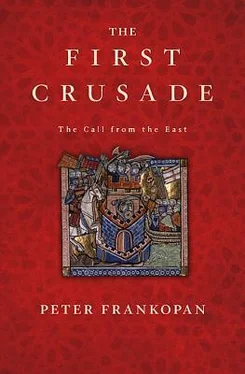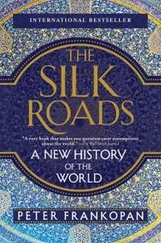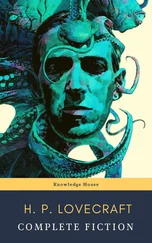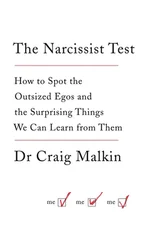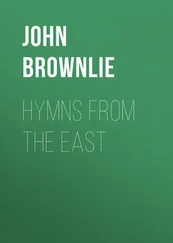Alexios took desperate steps to try to hold on to the town. Five hundred Flemish knights, sent by Robert, Count of Flanders, who had met Alexios on his way home from pilgrimage to Jerusalem at the end of 1089, were supposed to have been deployed against the Pechenegs. 3When they arrived in Byzantium in the middle of the following year, they were instead immediately transferred across the Bosphorus to help reinforce Nikomedia. Their presence proved vital in the short term, but when the Flemish knights were recalled to face the Pechenegs at Lebounion in the spring of 1091, 4one of the oldest and most famous towns of Asia Minor, which had briefly served as the eastern capital of the Roman empire in the third century, fell to Abu’l-Kasim. 5The loss of Nikomedia was a disaster for Byzantium and raised serious questions about the empire’s long-term ability to hold on to its eastern provinces as a whole.
Fears about Byzantine prospects in Asia Minor were raised further by the fact that others were also poised to exploit the problems facing the empire. Danishmend, a charismatic Turkish warlord, launched daring raids from eastern Asia Minor deep into Cappadocia and on major towns such as Sebasteia and Kaisereia. 6Then there was Çaka, an ambitious Turk who established himself in Smyrna on the western coast of Asia Minor and paid local shipbuilders to construct a fleet to attack a range of targets close to his new base, including islands in the Aegean. 7If anything, this was as serious as the loss of Nikomedia, for Çaka’s fleet gave him the power to strike further afield. It also allowed him to disrupt shipments from towns and islands along the coast, which were destined for Constantinople. At a time when the pro visioning of the capital was already under pressure because of the Pecheneg threat, this brought with it the prospect of shortages, inflation and social unrest. Matters were made worse by a particularly severe winter in 1090–1, the harshest in living memory, when so much snow fell that many were trapped in their houses. 8
A poem from around this period described how a woman from one of the provinces in Asia Minor endured such deprivation that she was forced to eat snake meat: ‘Did you eat snakes whole or only in parts? Did you cut off the tails and heads of creatures or did you eat all their parts? How could you devour poisonous flesh full of poison and not die at once?’ Such were the consequences of a terrible winter, severe famine, and the barbarian scourge. 9
Efforts to deal with Çaka went spectacularly wrong. One local governor fled without putting up any resistance at all, while a hastily assembled force sent by the emperor to secure the western coast of Asia Minor was a fiasco. Not only was the Byzantine fleet routed, but Çaka managed to capture several imperial vessels in the process. This only served to accelerate gains he made elsewhere. 10
The building up of Çaka’s fleet was a worrying development for another reason. Constantinople was protected by formidable land walls, ditches and heavily armed towers, but the Byzantines had a particular anxiety about the prospect of attack on the capital by sea. A giant sea chain laid across the entrance to the Golden Horn gave some reassurance, though in practice this often did not prove effective. Seaborne assaults on the city, even by small numbers of raiders, triggered hysteria amongst the inhabitants, as had happened in the ninth and tenth centuries, when Viking and Russian raiders made surprise strikes on the suburbs, causing widespread panic. In Çaka’s case, the fear was that the Turk might come to an accommodation with the Pechenegs and launch a joint assault on the city. In the spring of 1091, rumours began circulating that there had been exchanges between the nomads and Çaka, with the latter offering his support against Byzantium. 11
The mood in the capital became dark and poisonous. In the presence of the emperor and his retinue in the spring of 1091, the patriarch of Antioch, John the Oxite, delivered a damning assessment of the empire’s predicament. The contrast to the upbeat view provided by Theophylact barely three years earlier could not have been sharper. Khios had been lost, said the patriarch, as had Mitylene. All the islands in the Aegean had fallen, while Asia Minor was in complete turmoil; not a single fragment of the east remained. 12The Pechenegs, meanwhile, had reached the walls of Constantinople, and Alexios’ efforts to deal with them had proved singularly ineffective. 13Reflecting on why the threats had become acute, John reached a stark conclusion: God had stopped protecting Byzantium. The lack of military success and the terrible hardships being endured were the fault of the emperor, declared the patriarch. Alexios had been an outstanding general before he became emperor but since then he had brought one defeat after another. By seizing the throne in 1081 he had angered God, who was now using pagans to punish Byzantium. Repentance was urgently required if things were to change. 14This apocalyptic verdict is a stark indication of the scale of the problems affecting Byzantium at the start of the 1090s.
The rapid downturn in Asia Minor was viewed with horror by westerners living in Byzantium. ‘The Turks allied themselves with many nations and invaded the rightful possessions of the empire of Constantinople’, wrote one eyewitness from central France. ‘Far and wide they ravaged cities and castles together with their settlements; churches were razed down to the ground. Of the clergymen and monks whom they captured, some were slaughtered while others were with unspeakable wickedness given up, priests and all, to their dire dominion and nuns – alas for the sorrow of it! – were subjected to their lusts. Like ravening wolves, they preyed pitilessly on the Christian people whom God’s just judgement had handed over to them as they pleased.’ 15
News of the devastating collapse in Asia Minor spread quickly all over Europe. Stories of plunder and arson, kidnap and sexual violence were reported across France, for example, with gory accounts of brutality, disembowelling and decapitation recorded by monks in their chronicles. 16Information of this kind was passed on by westerners who were living in or visiting Constantinople in the early 1090s, such as a monk from Canterbury, who had made a home for himself in the capital, or an awestruck traveller who described the sights of Constantinople and recounted the conversations he had with its inhabitants. 17
Alexios himself was the source of some of the reports describing the horrors endured by Byzantines at the hands of the Turks. A letter sent by the emperor to Robert, Count of Flanders, gives a devastating picture of the situation in Asia Minor in 1090–1. 18This correspondence has traditionally been viewed as a forgery, its contents discounted by generations of scholars on the grounds that Byzantium’s eastern provinces had been lost by 1081 and that there was therefore no major change in conditions in the years immediately before the First Crusade. Thus the claims about the shocking reversals against the Turks have been regarded as wild, implausible, and with only a slender basis in fact. Scholars have forcefully argued that the letter is a fabrication to rally support against Byzantium at the start of the twelfth century after relations between Alexios and some of the senior figures who took part in the Crusade irretrievably collapsed. 19
It is widely recognised, conversely, that a letter probably was sent by Alexios to the Count of Flanders in the early 1090s, given the relations between the two men. As such, it has been suggested that there was an original document sent from Constantinople that provided the base of the letter that survives – albeit translated, elaborated on and added to. 20Certainly, the prose and language of the letter are unmistakably Latin, while the diplomatic and political thought are clearly western, rather than Byzantine in style.
Читать дальше
